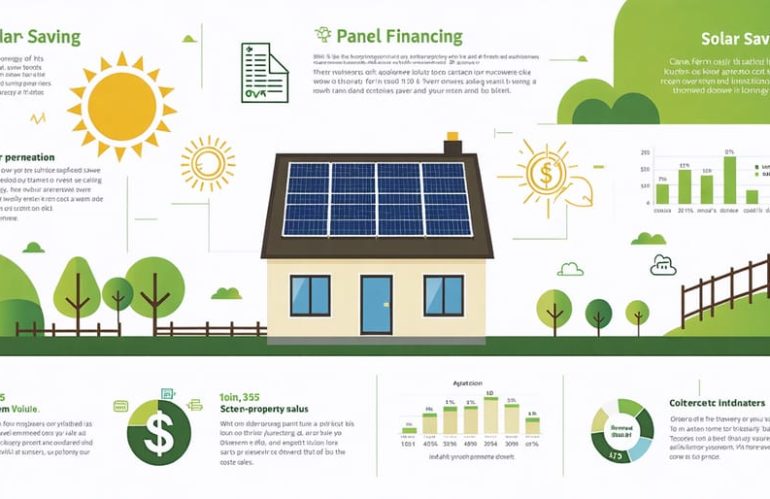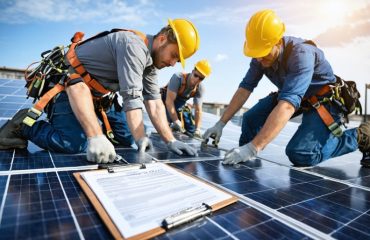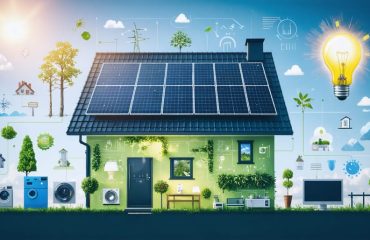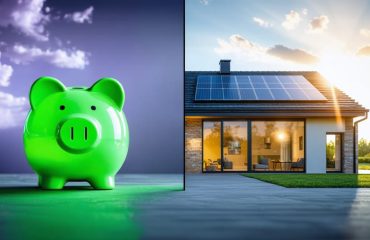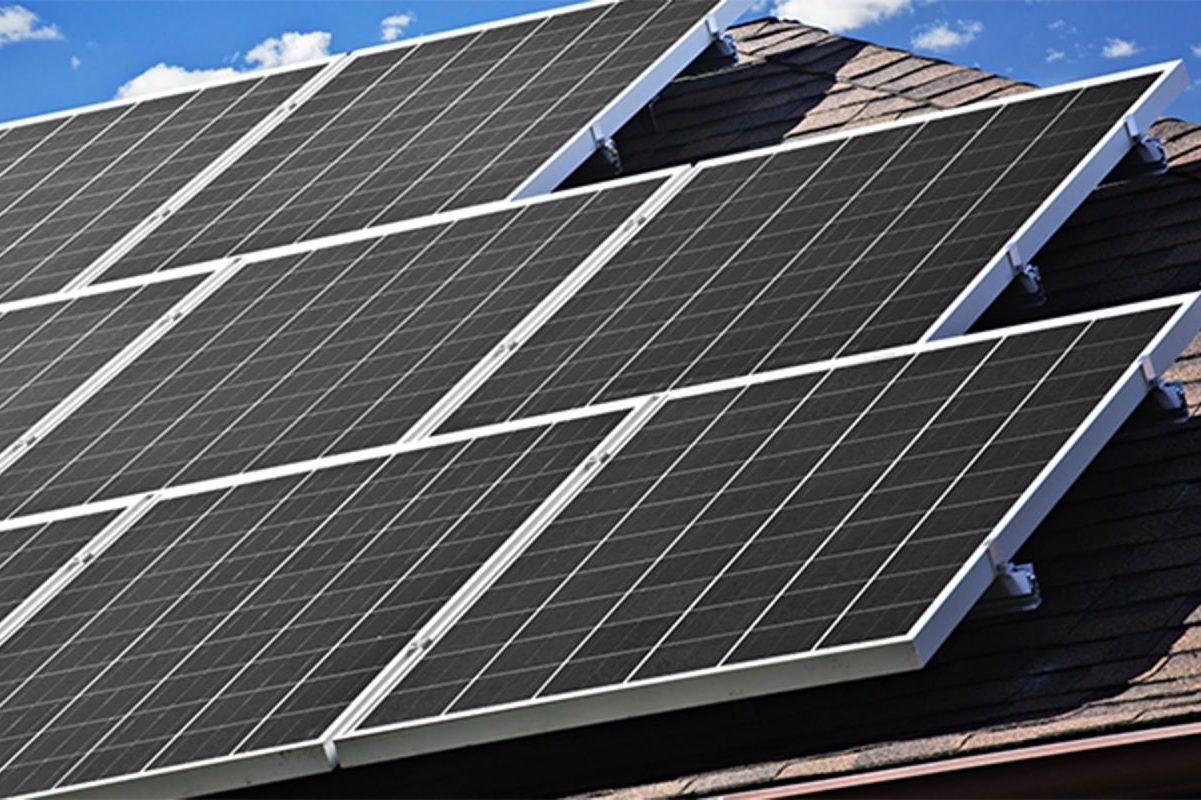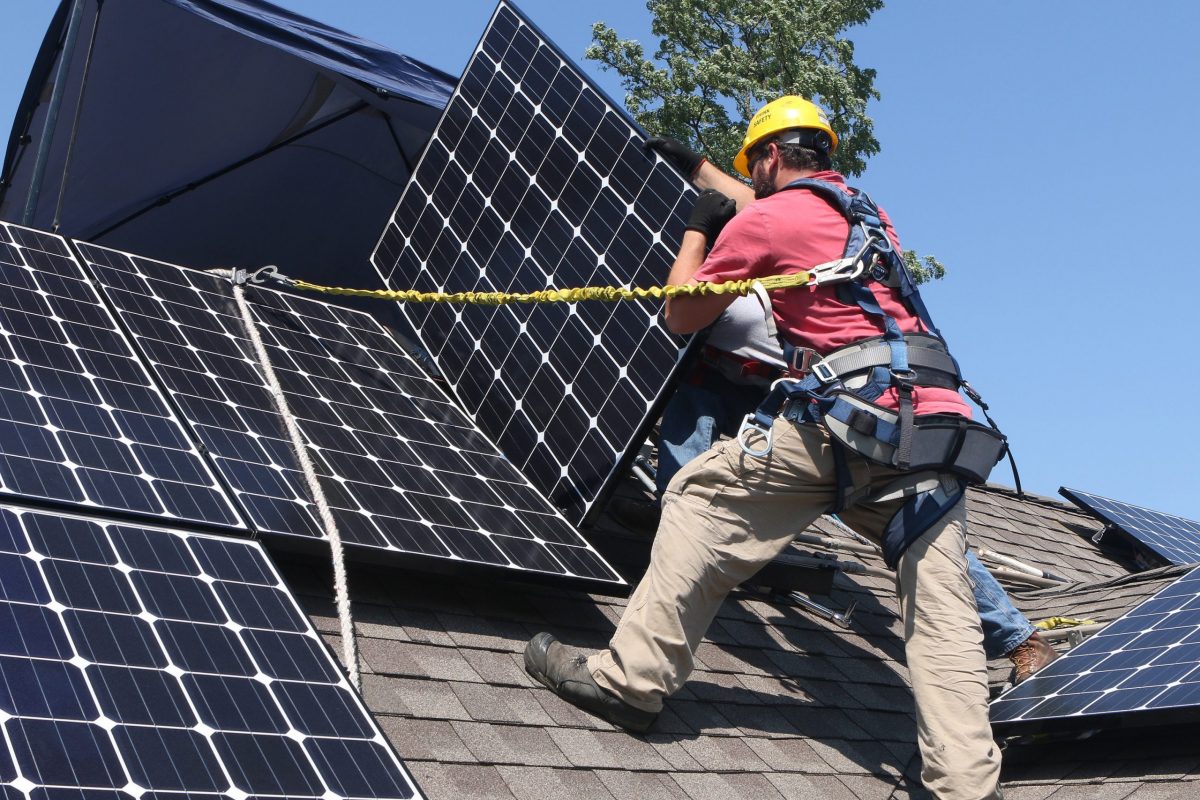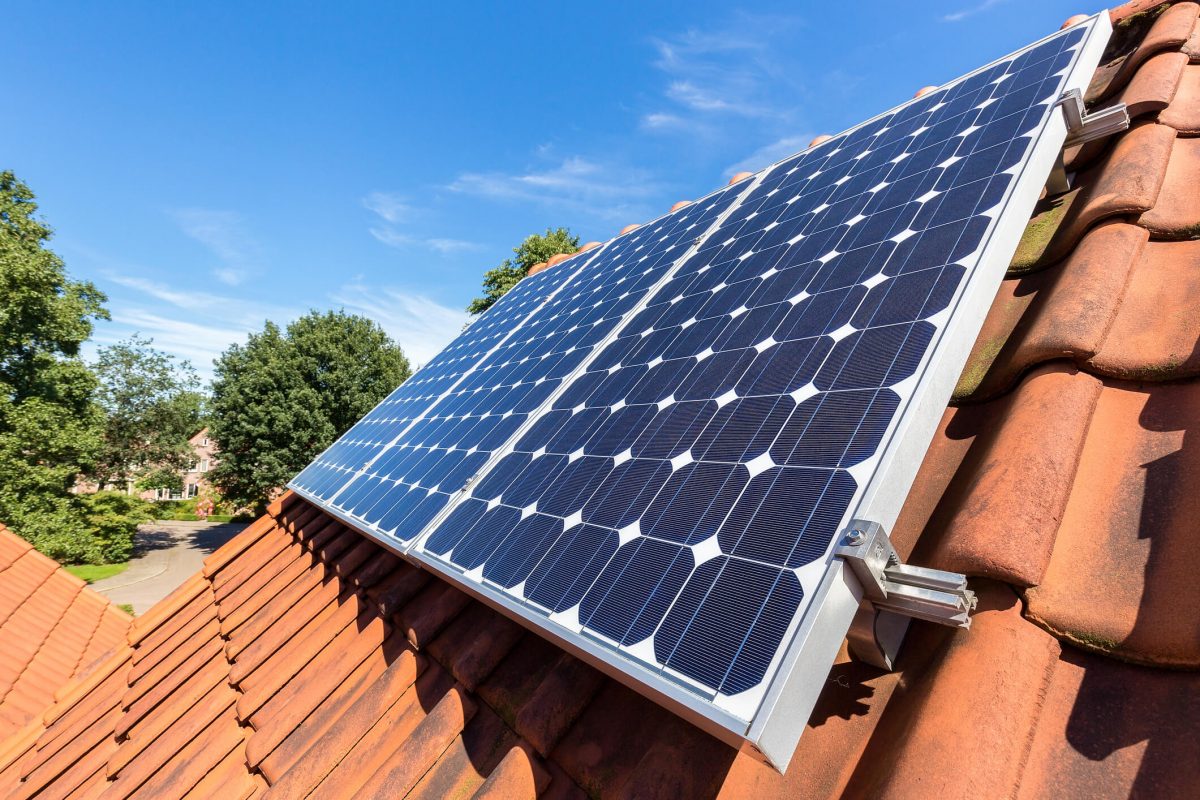Solar panel financing has emerged as a game-changing solution for homeowners looking to embrace clean energy without the burden of hefty upfront costs. With electricity prices continuing to rise and solar technology becoming more efficient, financing solar panels can translate into immediate monthly savings while increasing your home’s value. Recent data shows that homeowners who finance solar installations typically save 40-70% on their energy bills, often paying less on their combined solar loan and reduced utility bills than they previously spent on electricity alone. The decision to finance solar panels isn’t just about immediate cost savings – it’s an investment that typically pays for itself within 5-7 years while providing decades of clean, reliable energy. Whether through solar loans, leases, or power purchase agreements (PPAs), today’s flexible financing options make solar power accessible to virtually any homeowner committed to reducing both their carbon footprint and long-term energy costs.
The Real Cost of Solar Panel Financing
Solar Loans vs. Solar Leases
When choosing how to finance your solar installation, you’ll typically encounter two main options: solar loans and solar leases. Each has distinct advantages and considerations worth exploring.
Solar loans allow you to own your system outright, similar to a home improvement loan. With options like zero interest solar loans becoming more available, this path often proves more cost-effective in the long run. You’ll benefit from tax incentives, increased home value, and complete ownership of the system. The main advantage is that all energy savings go directly to you once the loan is paid off.
Solar leases, on the other hand, require no upfront costs and minimal maintenance responsibility. The leasing company owns and maintains the system while you pay a monthly fee to use it. While this option offers immediate energy savings with no initial investment, you won’t qualify for tax incentives or increase your home’s value as much as with ownership.
Consider your long-term goals when deciding. If you plan to stay in your home for many years, a solar loan typically offers better financial returns. However, if you prefer a hands-off approach with predictable monthly payments, a lease might be more suitable. Remember that loan terms and lease agreements vary significantly between providers, so carefully compare offers before making your decision.
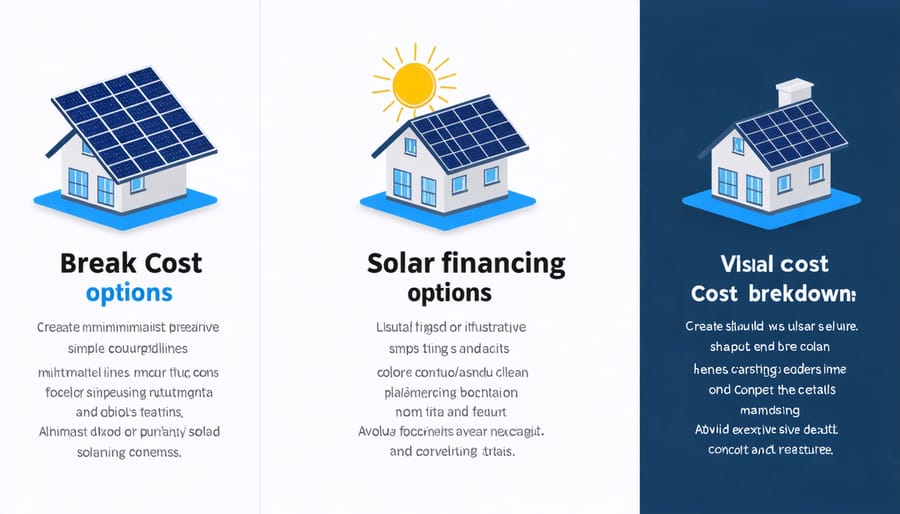
Interest Rates and Payment Terms
When financing solar panels, you’ll typically encounter interest rates ranging from 4% to 8%, depending on your credit score and the lender you choose. Most solar loans have terms between 5 and 20 years, with longer terms resulting in lower monthly payments but higher total costs due to accumulated interest.
For example, on a $20,000 solar system, a 10-year loan at 6% interest would result in monthly payments of around $222. Extending this to 20 years would lower the monthly payment to approximately $143, but you’d pay more in total interest over the loan’s lifetime.
Many solar financing options come with $0 down payment, making it easier to get started. Some lenders offer special promotions like no payments for the first 12 months or reduced interest rates for the initial period. However, be sure to read the fine print, as these promotional terms often adjust to higher rates after the introductory period.
A unique advantage of solar loans is that you can apply your federal tax credit (currently 30% of the system cost) directly to the loan principal. This can significantly reduce your overall payment terms and total interest paid. Many homeowners choose to make this lump-sum payment as soon as they receive their tax credit, effectively shortening their loan term.
Before signing any financing agreement, consider whether the monthly payments fit comfortably within your budget and compare offers from multiple lenders to secure the best terms.
Financial Benefits That Make Solar Worth It
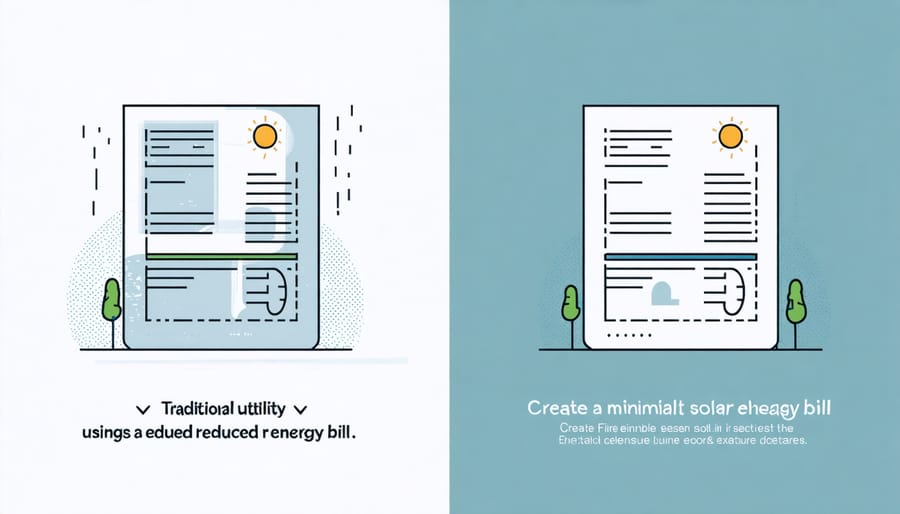
Monthly Energy Savings
The average homeowner can expect to see significant reductions in their monthly energy bills after installing solar panels. Typically, households save between $100 and $200 per month, translating to annual savings of $1,200 to $2,400. These savings can vary based on factors like your location, energy consumption patterns, and local electricity rates.
In states with higher electricity costs, such as California or Hawaii, monthly savings can exceed $300. Even in areas with moderate electricity rates, most homeowners report cutting their energy bills by 50-90%. During peak summer months, when air conditioning usage is high, savings tend to be even more substantial.
To calculate your potential savings, review your past 12 months of electricity bills and multiply your average monthly usage by your local solar production rate. Don’t forget to factor in net metering benefits, which allow you to earn credits for excess energy your system produces. Many homeowners find that their energy savings alone can cover their monthly solar loan payments, making financing a cost-effective solution from day one.
Tax Incentives and Rebates
Solar panel investments come with significant financial perks through various tax incentives and rebates. The federal solar tax credit, also known as the Investment Tax Credit (ITC), allows you to deduct 30% of your solar installation costs from your federal taxes. This incentive is available through 2032, making now an excellent time to consider solar financing.
Many states offer additional tax incentives and rebates on top of the federal credit. These can include state tax credits, property tax exemptions, and sales tax exemptions on solar equipment purchases. Some states even provide performance-based incentives, paying you for the solar energy your system produces.
Local utilities often contribute to making solar more affordable through net metering programs and solar renewable energy certificates (SRECs). Net metering allows you to earn credits for excess energy your system produces, while SRECs can be sold for additional income in certain states.
To claim these incentives, keep detailed records of your solar installation costs and consult with a tax professional. Most solar installers will help you navigate the paperwork and identify all available incentives in your area. Remember that while some incentives are immediate, others might require waiting until tax season to realize the benefits.
The combination of these incentives can significantly reduce your overall solar investment, making financing a more attractive option. Be sure to research local programs, as available incentives vary by location and may change over time.
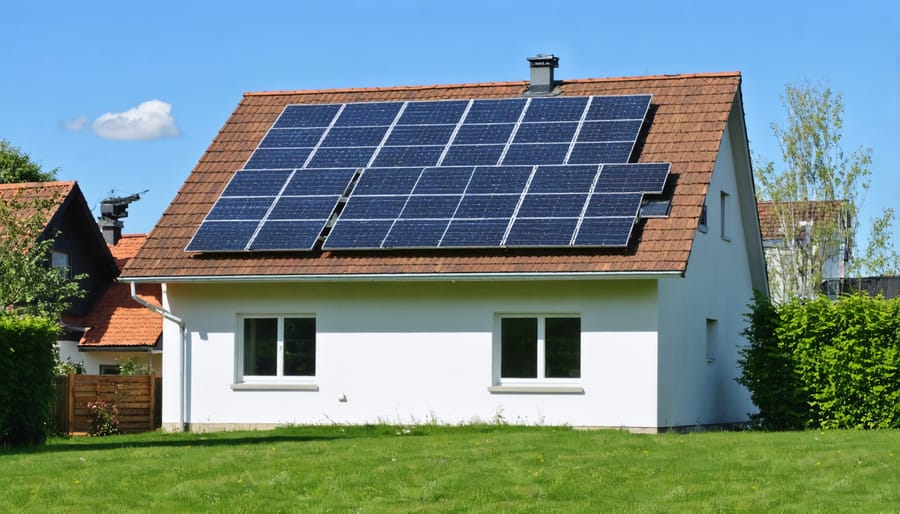
Home Value Increase
Installing solar panels can significantly boost your home’s market value, making it an attractive investment beyond just energy savings. According to recent studies, homes with solar installations typically sell for 4.1% more than comparable properties without solar systems. For a $400,000 home, this could mean an increase of approximately $16,400 in value.
The value increase is particularly noteworthy in areas with high electricity costs and solar-friendly policies. Buyers are increasingly prioritizing energy-efficient homes, and solar panels are viewed as a premium feature that can lower future utility costs. Even with a financed system, the added property value often exceeds the remaining loan balance, making it a sound investment for your home’s equity.
Real estate experts note that homes with solar installations typically spend less time on the market compared to conventional properties. This increased marketability, combined with the potential for higher resale value, helps offset the initial financing costs. However, it’s important to note that the value increase can vary depending on your location, local energy costs, and the size and efficiency of your solar system.
Making Smart Financing Decisions
Evaluating Your Financial Situation
Before deciding to finance solar panels, take a thorough look at your financial situation. Start by reviewing your monthly energy bills to understand your current spending and potential savings. Calculate your disposable income and determine how much you can comfortably allocate toward solar panel payments.
Consider your credit score, as it significantly impacts the interest rates and financing terms available to you. A higher credit score typically means better rates and more favorable conditions. Also, evaluate your home’s equity if you’re considering a home equity loan or HELOC as financing options.
Look at your long-term financial goals and how solar financing fits into them. While solar panels can increase your home’s value and help you save on energy costs, it’s essential to ensure you can maintain your solar investment without straining your budget.
Review any available tax incentives, rebates, or local programs that could reduce your overall costs. Keep in mind that different financing options have varying impacts on your tax benefits and potential savings. Consider consulting a financial advisor to help evaluate which financing option best aligns with your financial situation and goals.
Red Flags to Watch For
When considering solar panel financing, be alert to these potential warning signs. Watch out for unusually high interest rates that exceed typical home improvement loan rates. Be wary of escalator clauses that increase your monthly payments over time, sometimes by 2-3% annually.
Carefully review contracts for hidden fees, including excessive maintenance charges or prepayment penalties. Some companies may promise unrealistic energy savings or use high-pressure sales tactics to rush your decision. Be cautious of installers who don’t clearly explain warranty terms or transfer conditions if you sell your home.
Avoid companies that won’t provide clear documentation of their licenses and insurance. If a dealer insists on a lease when you prefer to purchase, or pushes specific financing options without explaining alternatives, consider it a red flag.
Remember to get multiple quotes and read all contract terms thoroughly. Don’t sign agreements with verbal promises that aren’t included in writing, and be skeptical of deals that seem too good to be true. Taking time to evaluate these aspects can help you avoid costly financing mistakes.
Questions to Ask Your Solar Provider
Before signing any solar financing agreement, it’s crucial to ask your provider these essential questions to ensure you’re making an informed decision. First, inquire about the total cost of the system and compare it to the financed amount, including all interest and fees. Ask about the interest rate, whether it’s fixed or variable, and the length of the financing term.
Request a clear breakdown of monthly payments and how they might change over time. Understanding the solar installation process and timeline is also crucial for planning your finances.
Don’t forget to ask about warranty coverage, maintenance responsibilities, and what happens if you need to sell your home. Inquire about any tax implications and whether the company will help you claim available incentives. Also, ask about performance guarantees and what happens if the system doesn’t generate the promised energy savings.
Finally, request information about the company’s track record, customer service policies, and what happens if you need to make warranty claims. Getting clear answers to these questions will help you make a confident decision about solar financing.
Financing solar panels can indeed be a worthwhile investment for many homeowners, offering a balanced approach to achieving energy independence while managing upfront costs. The combination of federal tax incentives, state rebates, and various financing options makes solar power more accessible than ever before.
When properly structured, solar financing can lead to immediate monthly savings, with loan payments often lower than your current electricity bills. Over time, these savings typically increase as energy costs rise, while your solar loan payments remain fixed. The long-term financial benefits become even more apparent once the system is paid off, potentially saving tens of thousands of dollars over the system’s lifetime.
However, the decision to finance solar panels should be based on your specific circumstances. Consider factors such as your current energy consumption, local electricity rates, available sunlight, and your home’s structural suitability. It’s also important to evaluate different financing options – from solar loans and leases to power purchase agreements – to find the best fit for your financial situation.
Before moving forward, take these practical steps:
– Get multiple quotes from reputable solar installers
– Review your energy usage patterns and potential savings
– Calculate your break-even point with different financing options
– Check local regulations and HOA requirements
– Verify available incentives in your area
– Compare loan terms from different providers
Remember that while solar financing requires careful consideration, it offers a unique opportunity to invest in your home’s future while contributing to environmental sustainability. With proper research and planning, financing solar panels can provide both immediate financial benefits and long-term energy security. Take time to explore your options, but don’t let the financing aspect deter you from embracing clean energy – the right solution likely exists for your specific needs.
For most homeowners, the combination of environmental benefits, energy independence, and long-term savings makes financing solar panels a smart investment in their property and the planet’s future.

